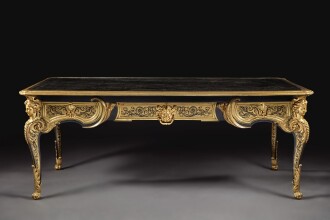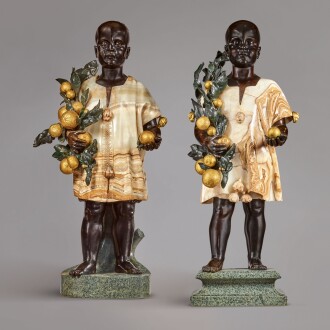Ezra and Cecile Zilkha’s collection reflects the couple’s immersion in the best of European art, design and jewellery.
T
hose fortunate enough to have visited the late Ezra and Cecile Zilkha’s house on Fifth Avenue, New York, found themselves journeying back through the centuries – and specifically to the eclectic curiosities of an 18th-century Parisian hôtel particulier. Descended from a prominent Bablylonian Jewish family, Ezra Zilkha had a deep care for the past – “I am always conscious of history", he once said in an interview – and nowhere was this more apparent than in the works of European art and design that filled his home.


Spanning more than 300 years, the Zilkha collection embodied their assured and singular taste down to the finest details. Juxtapositions abound: richly decorated French golden-age tables by André-Charles Boulle exist beside delicate sculptural figures by Degas, an exotic Old Master portrait by Jean-Baptiste Le Prince accompanies a pared back Modernist composition by Milton Avery. And provenance runs deep: furniture includes voyeuses from the House of Savoy, a table that once belonged to Marie-Antoinette and a commode formerly with the Habsburgs.

As well as avid collectors, the Zilkhas were formidably social, welcoming the likes of Henry Kissinger and Ronald Reagan into their home to immerse themselves in its atmosphere. Standout characters from these occasions went beyond their guests: Cecile Zilkha’s unparalleled collection of jewellery provided a dazzling and highly personal connection to their collecting lives. Cecile’s love for coloured stones carried through works such as an Emerald and Diamond Stomacher Brooch, created as a wedding gift for Lady Frances Vane, while pieces by Van Cleef & Arpels and Bulgari offer a stirring tribute to 20th-century design.


Away from home, both Ezra and Cecile travelled the world with a deep curiosity and passionately donated to the causes they cared about: the arts, education, the medical industry. Ezra immortalised these experiences in his memoir From Baghdad to Boardrooms, but it is in their objects, too, that an unmissable testament to their journey can be found.














